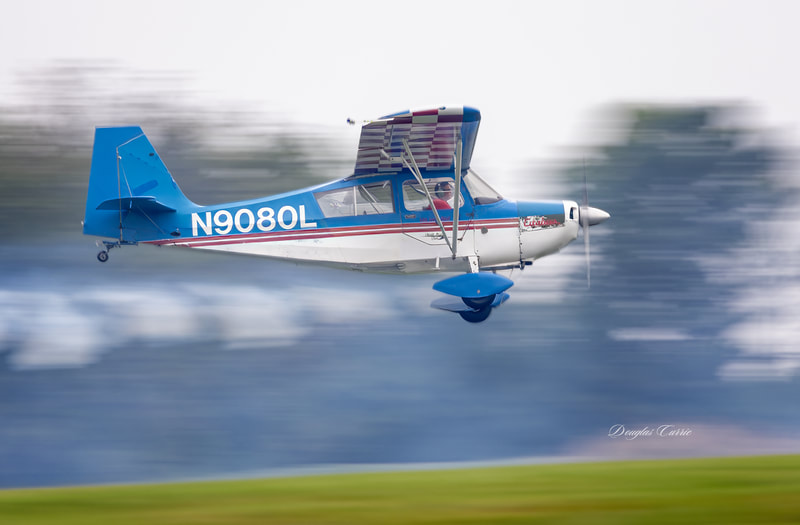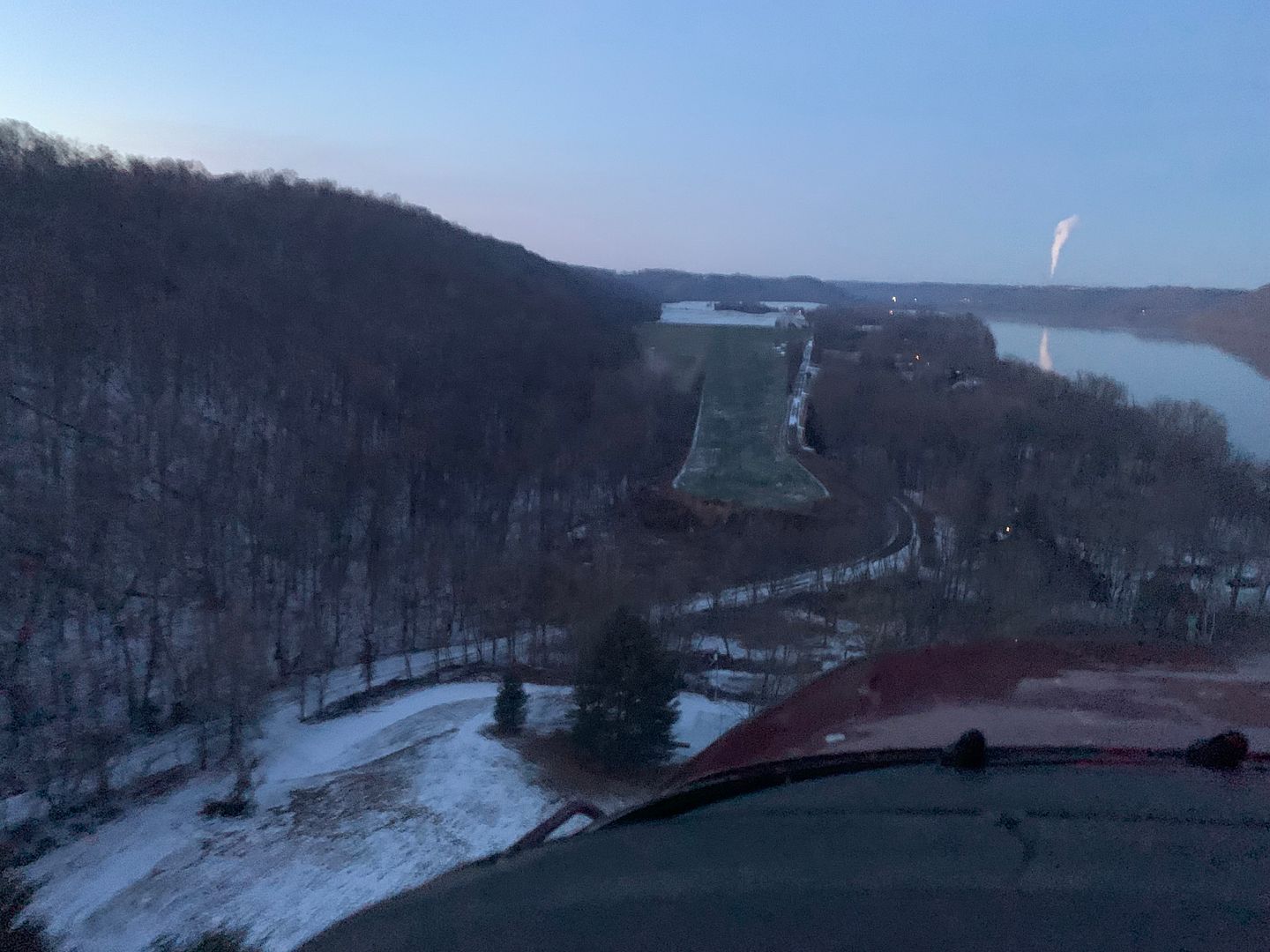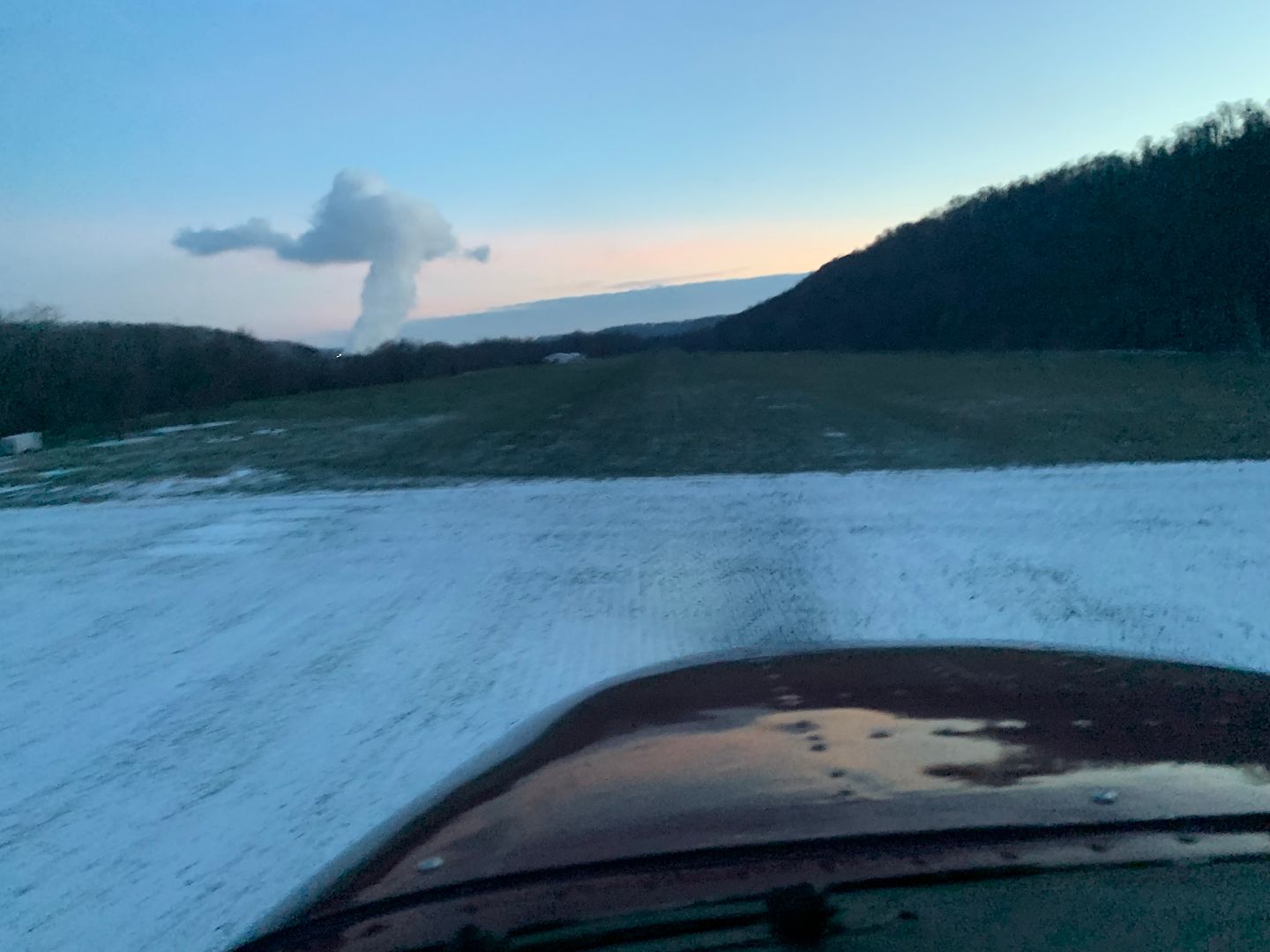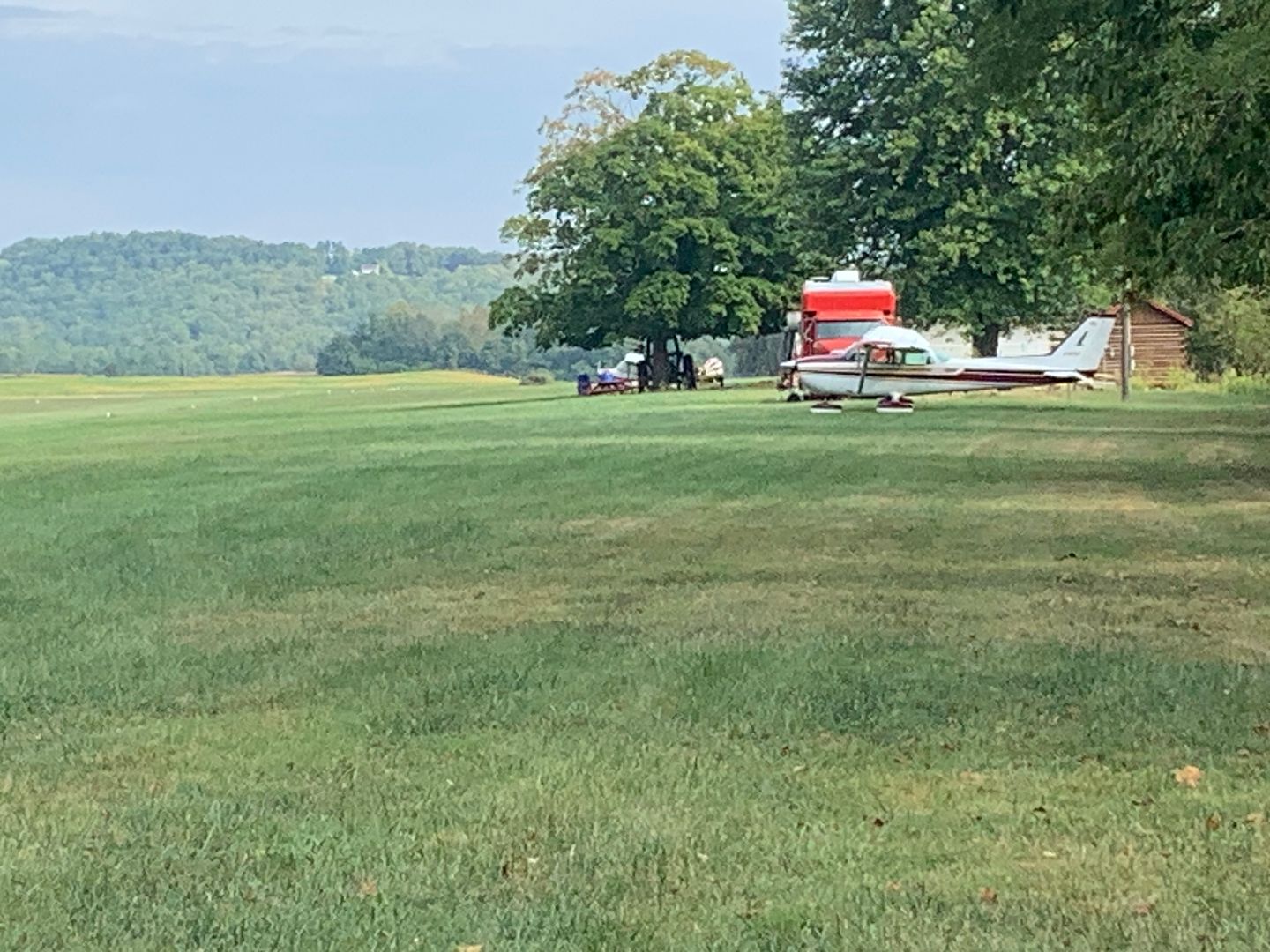You are using an out of date browser. It may not display this or other websites correctly.
You should upgrade or use an alternative browser.
You should upgrade or use an alternative browser.
Flight school train on grass strip?
- Thread starter Trcpilot
- Start date
Insurance requirements are likely to be the controlling factor. I don’t think i’ve ever had a rental policy (required by most flight schools to offload insurance responsibility to students & renter) that didn’t exclude grass strip or off field operations. Grass fields, speaking very generally, tend to be shorter, narrower, & plagued by obsticals in the approaches that make them more challenging, for students or licensed pilots. Grass fields also present less reliable conditions than paved (soft spots & mud, long wet grass that sharply increase takeoff rolls & offer more skidding hazards on landing than pavement.)
But i’m sure they are out there. Just not as plentiful as you’d have hoped.
But i’m sure they are out there. Just not as plentiful as you’d have hoped.
Daleandee
Final Approach
- Joined
- Mar 4, 2020
- Messages
- 6,326
- Display Name
Display name:
Dale Andee
I am looking for a flight school that allows grass strip landings or train at a grass strip airport. Post location, independent cfi and/or school name. Thank you
Not a flight school but a great instructor and a nice grass field with a couple of airplanes for various types of training. Beautiful location:
Blue Ridge Sport Flight
Learn to fly at Hendersonville Airport with one of the areas most experienced instructors. Specializing in tailwheel training in a 1946 Aeronca Champ. Private Pilot, Instrument, Commercial, CFI, and ATP training in our fleet of 7 aircraft.
blueridgesportflight.com
sarangan
Pattern Altitude
- Joined
- Jun 7, 2008
- Messages
- 1,896
- Display Name
Display name:
Andrew, CFI-I
I am looking for a flight school that allows grass strip landings or train at a grass strip airport. Post location, independent cfi and/or school name. Thank you

Lindberg
Final Approach
Big Q Aviation. KJWY. Midlothian, Texas.
rk911
Cleared for Takeoff
I took my SPL training at JA at KARR which included grass field work.
Gilbert Buettner
Line Up and Wait
We have three grass runways at our airport and routinely use them with student pilots. Come fly with me in Wisconsin.
Where are you located?
I trained on 100% long paved runways at delta airport. During one of my stage checks, the chief flight instructor that I was flying with asked if I could find red stewart. I tried and flew right over it.He turned me around and I landed twice there that day and was the first and last day I trained on grass.
I rented after I got my PPL from the same flight school and they were no restrictions on where could take the rentals.
8 years later I have been landing on grass for years more than I land on asphalt. Not necessary to train on grass imo.
I trained on 100% long paved runways at delta airport. During one of my stage checks, the chief flight instructor that I was flying with asked if I could find red stewart. I tried and flew right over it.He turned me around and I landed twice there that day and was the first and last day I trained on grass.
I rented after I got my PPL from the same flight school and they were no restrictions on where could take the rentals.
8 years later I have been landing on grass for years more than I land on asphalt. Not necessary to train on grass imo.
Last edited:
Lindberg
Final Approach
I guess people don't land on grass runways during private training anymore? I recently met a 135 pilot who claimed to have >5000 hrs and was making his first-ever off pavement landing.
FastEddieB
Touchdown! Greaser!
- Joined
- Oct 14, 2013
- Messages
- 11,421
- Location
- Lenoir City, TN/Mineral Bluff, GA
- Display Name
Display name:
Fast Eddie B
I think it’s borderline negligent to sign off a Private Pilot applicant with only simulated soft field experience.
MauleSkinner
Touchdown! Greaser!
I’ve made thousands of landings on grass, but probably less than a dozen soft field operations.I think it’s borderline negligent to sign off a Private Pilot applicant with only simulated soft field experience.
FastEddieB
Touchdown! Greaser!
- Joined
- Oct 14, 2013
- Messages
- 11,421
- Location
- Lenoir City, TN/Mineral Bluff, GA
- Display Name
Display name:
Fast Eddie B
Pardon my sloppy nomenclature. I generally consider grass takeoffs and landings as soft field operations, but that may be too broad a definition.I’ve made thousands of landings on grass, but probably less than a dozen soft field operations.
How about “I think it’s borderline negligent to sign off a Private Pilot applicant without grass field experience.”
MauleSkinner
Touchdown! Greaser!
I guess I would tend to disagree, primarily because it would often end up being one or two operations to “check the box” with an instructor who’s scared of grass.Pardon my sloppy nomenclature. I generally consider grass takeoffs and landings as soft field operations, but that may be too broad a definition.
How about “I think it’s borderline negligent to sign off a Private Pilot applicant without grass field experience.”
Jaminky
Pre-Flight
Grass is awesome!None of those annoying squawks it makes me feel like a better pilot lol.Not to mention way more fun
it makes me feel like a better pilot lol.Not to mention way more fun
 it makes me feel like a better pilot lol.Not to mention way more fun
it makes me feel like a better pilot lol.Not to mention way more funFastEddieB
Touchdown! Greaser!
- Joined
- Oct 14, 2013
- Messages
- 11,421
- Location
- Lenoir City, TN/Mineral Bluff, GA
- Display Name
Display name:
Fast Eddie B
In my defense, I’m not alone in my definition.I guess I would tend to disagree, primarily because it would often end up being one or two operations to “check the box” with an instructor who’s scared of grass.
In part:
”The soft field landing maneuver is used when landing on grass or other soft landing surfaces. It demonstrates how the airplane needs to be handled differently on these high-drag surfaces. Mastering this maneuver will help pilots become comfortable operating to and from grass strips.”
I’m guessing this language comes from the Private Pilot ACS, but I’m too tired right now to research it further.
Daleandee
Final Approach
- Joined
- Mar 4, 2020
- Messages
- 6,326
- Display Name
Display name:
Dale Andee
Grass is awesome!None of those annoying squawksit makes me feel like a better pilot lol.Not to mention way more fun
For tailwheel airplanes many say that the grass field is easier to deal with, and in many respects that is true but they can be a challenge depending on how well kept they are and how much water has fallen from the sky lately.
I have a few near me that I like to visit. At least one of them becomes noticeably shorter after a good rain as a large soft wet area appears about a quarter way down one end. Still there's plenty of room to get in and out ... if you don't get stuck in the mud!
DesertNomad
Pattern Altitude
Pardon my sloppy nomenclature. I generally consider grass takeoffs and landings as soft field operations, but that may be too broad a definition.
How about “I think it’s borderline negligent to sign off a Private Pilot applicant without grass field experience.”
I live in Nevada and we don’t have grass. My grass runway landings are in Illinois, Texas, and Georgia. My students here have no grass options.
Huckster79
Pattern Altitude
- Joined
- Nov 22, 2018
- Messages
- 2,327
- Display Name
Display name:
Huckster79
I think it’s borderline negligent to sign off a Private Pilot applicant with only simulated soft field experience.
I concur! I was too nervous to land on real grass Till my first biannual and demanded we try one. My cfi said “I taught ya soft field” I said but yea on the paved- I eventually owned a Cessna 140 so was a grass strip preferer. But I couldn’t agree more, it really was a disservice, as I had in my head they were far more different than pavement than they really are…
mandm
Pattern Altitude
Oh wow interesting, I’ve never heard of grass field restrictions. I learned grass field in training and also specifically requested some grass fields.
I’m pretty good at reading terms and rules and I don’t recall any school having a grass field restriction. However I did not read the specifics of the schools insurance policy either.
I’m pretty good at reading terms and rules and I don’t recall any school having a grass field restriction. However I did not read the specifics of the schools insurance policy either.
Everything is negotiable on insurance. In our club, we had less issue getting the "hard surfaced" restriction removed (they decided to limit us to landing at airports) than certain other restrictions. In fact, almost always it's up to the insured to write what they want as restrictions and then run it by the insurer to see what quote they get back.Insurance requirements are likely to be the controlling factor. I don’t think i’ve ever had a rental policy (required by most flight schools to offload insurance responsibility to students & renter) that didn’t exclude grass strip or off field operations. Grass fields, speaking very generally, tend to be shorter, narrower, & plagued by obsticals in the approaches that make them more challenging, for students or licensed pilots. Grass fields also present less reliable conditions than paved (soft spots & mud, long wet grass that sharply increase takeoff rolls & offer more skidding hazards on landing than pavement.)
I wouldn't buy the shorter/more obstacles line. Around the mid-atlantic we've got tons of perilous due to obstacles, shortness, or odd terrain paved strips. I can count the difficult public-use grass strips on one hand.
If you're flying taildragges
Clip4
Final Approach
Really. AVEMCO doesn’t. If it is an airport you are covered.Insurance requirements are likely to be the controlling factor. I don’t think i’ve ever had a rental policy (required by most flight schools to offload insurance responsibility to students & renter) that didn’t exclude grass strip or off field operations. Grass fields, speaking very generally, tend to be shorter, narrower, & plagued by obsticals in the approaches that make them more challenging, for students or licensed pilots. Grass fields also present less reliable conditions than paved (soft spots & mud, long wet grass that sharply increase takeoff rolls & offer more skidding hazards on landing than pavement.)
But i’m sure they are out there. Just not as plentiful as you’d have hoped.
Exclusion:
f. operated into, on or from a landing area that is not designed, maintained and used as an airport. This exclusion shall not apply to a forced landing due to emergency flight conditions;
Last edited:
MauleSkinner
Touchdown! Greaser!
I’m not saying it isn’t a common misnomer, but it directly conflicts with POHs that give takeoff and landing distances for grass runways.In my defense, I’m not alone in my definition.
In part:
”The soft field landing maneuver is used when landing on grass or other soft landing surfaces. It demonstrates how the airplane needs to be handled differently on these high-drag surfaces. Mastering this maneuver will help pilots become comfortable operating to and from grass strips.”
I’m guessing this language comes from the Private Pilot ACS, but I’m too tired right now to research it further.
SkyChaser
Pattern Altitude
- Joined
- Mar 22, 2020
- Messages
- 2,035
- Display Name
Display name:
SkyChaser
Estherville, IA. At least a couple of years back, there were no restrictions on grass at all. My second solo flight was TnGs on the grass runway. My long solo xc included a grass runway as well. Landing on grass can be a blast.
Last edited:
Domenick
Pattern Altitude
- Joined
- Sep 11, 2019
- Messages
- 1,828
- Display Name
Display name:
Domenick
Snohomish Flying Service at Harvey Field, Snohomish, WA. Nice grass runway open about 9 months of the year. The other three months it can get a little sloppy.
 www.harveyfield.com
www.harveyfield.com
Harvey Field
Harvey Field offers a full range of services for fixed-wing and rotor-wing aircraft.
Dan Thomas
Touchdown! Greaser!
- Joined
- Jun 16, 2008
- Messages
- 10,773
- Display Name
Display name:
Dan Thomas
We used to train students in practice forced landings in wheat stubble fields. They were amazed at how long it took to get off again. That stubble has a lot of drag at speed. Everyone should experience it.
Gravel is fun, too, especially in a crosswind. You crab a lot in the rollout, or end up in the ditch. And be prepared to have prop nicks that need dressing out.
Gravel is fun, too, especially in a crosswind. You crab a lot in the rollout, or end up in the ditch. And be prepared to have prop nicks that need dressing out.
FastEddieB
Touchdown! Greaser!
- Joined
- Oct 14, 2013
- Messages
- 11,421
- Location
- Lenoir City, TN/Mineral Bluff, GA
- Display Name
Display name:
Fast Eddie B
Are there no grass strips within a reasonable distance? A student’s long crosscountry might include one of those.I live in Nevada and we don’t have grass. My grass runway landings are in Illinois, Texas, and Georgia. My students here have no grass options.
JEM68
Filing Flight Plan
...train at a grass strip airport...
 www.skyranchairport.org
www.skyranchairport.org
Skyranch Airport (TN98)
Zeldman
Touchdown! Greaser!
I have landed on sand, gravel, snow and ice runways, but never grass. Not even the off airport landings had grass. The beach landings were always fun since the runway slopes towards the water, so landing in a crab away from the water is necessary. Landing on ice with a crosswind means sliding on the ice in a crab on landing and take off.
And yes, expect nicks on the prop...
And yes, expect nicks on the prop...
Albany Tom
En-Route
- Joined
- Jul 23, 2021
- Messages
- 3,484
- Display Name
Display name:
Albany Tom
GBR in Mass has some instructors that will teach on grass fields, or at least they used to, and there are some nice ones around here. Keep in mind that flying on grass is seasonal around here, you won't be doing it on snow or when it's wet, and that weather in the NE can be frequently not friendly to training.
In my experience the trickiest part of landing on grass is finding the airport. I think flying on/off grass is good to do, if only because you probably won't believe how much of not a big deal it is until you've done it. A really easy checkbox item to do...again, as long as the field isn't too wet. Grass = lovely. Mud/water/swamp = maybe not such a good plan.
In my experience the trickiest part of landing on grass is finding the airport. I think flying on/off grass is good to do, if only because you probably won't believe how much of not a big deal it is until you've done it. A really easy checkbox item to do...again, as long as the field isn't too wet. Grass = lovely. Mud/water/swamp = maybe not such a good plan.
RyanShort1
Final Approach
The reason for insurance companies wanting to restrict grass probably has to do with various hazards that can indeed be encountered especially when operating at grass fields. Probably 15+ years ago I was in a Taylorcraft L-2 on a grass field that I was familiar with (it was the aircraft's home base) and due to feeling rushed by a plane that called short final when I was only halfway down the runway, I taxied off the main surface just a few feet and managed to plant both main gear in perfectly spaced gopher holes... let's just say that wasn't fun.
DesertNomad
Pattern Altitude
Are there no grass strips within a reasonable distance? A student’s long crosscountry might include one of those.
I am not willing to solo a student over the Sierras to a grass strip. We could potentially go somewhere in the California Central Valley on a dual flight, but it’s a long way to find grass… 170nm or so. There may well be some that I don’t know about but it’s not like the Midwest.
Kritchlow
Final Approach
- Joined
- Dec 2, 2014
- Messages
- 7,720
- Display Name
Display name:
Kritchlow
We just “did it”.
Small airport, 1800’ foot strip. We at times just opted to land east grass or west grass. Especially the jump planes. (Grass left or right of runway).
@midlifeflyer trained at same airport, perhaps he can expound.
No clue if it was actually approved, but we often did it.
Small airport, 1800’ foot strip. We at times just opted to land east grass or west grass. Especially the jump planes. (Grass left or right of runway).
@midlifeflyer trained at same airport, perhaps he can expound.
No clue if it was actually approved, but we often did it.
Last edited:
I think it doesn't matter, once you learn how to land you can land on just about anything. Not a big deal to land on grass. Concentrate on how to learn to fly and the grass strips will be a non event. Just as long as it is a public use air strip. A private strip may not be as well kept and more risk is involved IMO.
I picked a 4100' grass strip to first land on after I got my PPL. So plenty of runway. Sure I was nervous at first, not because it was grass but because it was in the river bottom and you descend through trees to get down into it towards the north.
This isn't my first landing here, probably my 200th.

Then this is it landing to the south, wide open and you could land a 737 here according to buddy who is is a 737 Captain.

This was yesterday. Been camping here for a week now, here for 3 weeks.

I picked a 4100' grass strip to first land on after I got my PPL. So plenty of runway. Sure I was nervous at first, not because it was grass but because it was in the river bottom and you descend through trees to get down into it towards the north.
This isn't my first landing here, probably my 200th.
Then this is it landing to the south, wide open and you could land a 737 here according to buddy who is is a 737 Captain.
This was yesterday. Been camping here for a week now, here for 3 weeks.
midlifeflyer
Touchdown! Greaser!
Wow! I didn't realize you flew there (unless I knew but forgot). I know the jump planes used the grass all the time but AFAIK, the flight school in in early 1990s didn't. I suspect the operation's insurance prevented it, like at so many other places. I didn't have my first grass landing until I was in Colorado. Too long ago to be relevant, but the flight school I used permitted grass landings with a an oral checkout.We just “did it”.
Small airport, 1800’ foot strip. We at times just opted to land east grass or west grass. Especially the jump planes. (Grass left or right of runway).
@midlifeflyer trained at same airport, perhaps he can expound.
No clue if it was actually approved, but we often did it.
Not for primary training (we don't do any), but my current flying club permits grass landings.
DaleB
Final Approach
No grass strips when I was training. Rentals from the FBO were specifically prohibited from landing on anything but pavement. My first operation on grass was with an instructor in a flying club plane, and was also a soft-field operation because the grass was tall and thick. I've flown from grass a few times since then, ranging from "oh-crap-this-stuff-is-wet-and-slippery" to Gaston's, which may as well have been paved.I guess people don't land on grass runways during private training anymore? I recently met a 135 pilot who claimed to have >5000 hrs and was making his first-ever off pavement landing.
Steamflyer
Pre-takeoff checklist
- Joined
- Mar 23, 2022
- Messages
- 400
- Display Name
Display name:
Steamflyer
Many policies don't allow landing on grass because there are too many variations in the surface quality and slope to want to insure a causal renter in such a field. For every billiard table field in the magazines, there are ten that undulate, are curved, have ruts and divots, and of course, soft spots. With more than three decades of experience on grass, I still fly over and sometimes drag a new grass strips. In the spring, assume that some part (often both ends) is unusable unless you want to risk having to fix the field and/or getting stuck. In summer they may get so dry that fissures develop which can almost swallow a 500 or 600 tire. Or just rattle the crap out of the airframe.
How much prop clearance do you have and can you land on the mains and gently lower the nose (N/A for tailwheel aircraft)? Can you put the airplane exactly on the dry spot you picked from the air? Do you know how fast you can lose directional control on wet or dewy grass?
That said, there is nothing better than landing on grass. It's by far the best surface. Especially in mid-June when the ground is firm, but not too firm, and the grass is alive, but neatly cropped. You can smell it before you even land.
Aerolex in NJ will train you in a trailwheel aircraft on grass if you like. And most of the above applies almost not at all to the many just amazingly gorgeous midwest strips of which I hope to get to experience one day.
How much prop clearance do you have and can you land on the mains and gently lower the nose (N/A for tailwheel aircraft)? Can you put the airplane exactly on the dry spot you picked from the air? Do you know how fast you can lose directional control on wet or dewy grass?
That said, there is nothing better than landing on grass. It's by far the best surface. Especially in mid-June when the ground is firm, but not too firm, and the grass is alive, but neatly cropped. You can smell it before you even land.
Aerolex in NJ will train you in a trailwheel aircraft on grass if you like. And most of the above applies almost not at all to the many just amazingly gorgeous midwest strips of which I hope to get to experience one day.
Ed Haywood
En-Route
TBH I feel a little uncomfortable on paved runways now.
bluerooster
Pattern Altitude
- Joined
- Nov 28, 2011
- Messages
- 2,072
- Display Name
Display name:
shorty
My first experience with grass was a runway 400' wide, and 7000' long. And well manicured, privately owned. It was a non event.

